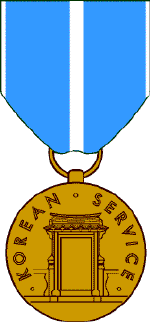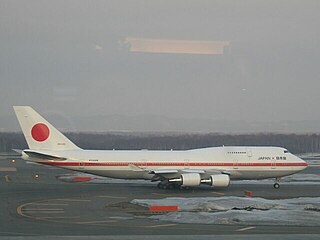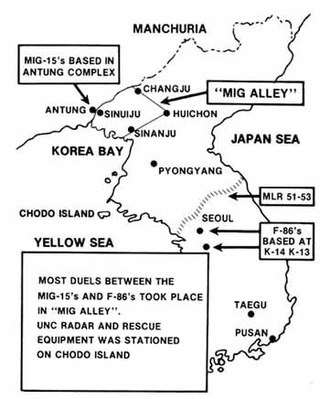
The Korean War was significant in the fact that it was the first war in which the newly independent United States Air Force was involved.

Gimpo International Airport, sometimes referred to as Seoul–Gimpo International Airport but formerly rendered in English as Kimpo International Airport, is located in the far western end of Seoul, some 15 kilometres (9 mi) west of the central district of Seoul.

The North American F-82 Twin Mustang is an American long-range escort fighter. Based on the North American P-51 Mustang, the F-82 was designed as an escort for the Boeing B-29 Superfortress in World War II, but the war ended well before the first production units were operational. The F-82 was the last American piston-engined fighter ordered into production by the United States Air Force.

The Battle of Inchon, also spelled Battle of Incheon, was an amphibious invasion and a battle of the Korean War that resulted in a decisive victory and strategic reversal in favor of the United Nations Command (UN). The operation involved some 75,000 troops and 261 naval vessels and led to the recapture of the South Korean capital of Seoul two weeks later. The code name for the Inchon operation was Operation Chromite.

The Battle of the Pusan Perimeter, known in Korean as the Battle of the Naktong River Defense Line, was a large-scale battle between United Nations Command (UN) and North Korean forces lasting from August 4 to September 18, 1950. It was one of the first major engagements of the Korean War. An army of 140,000 UN troops, having been pushed south to the brink of defeat, were rallied to make a final stand against the invading Korean People's Army (KPA), 98,000 men strong.

Chitose Air Base, is a Japan Air Self-Defense Force base located in Chitose, Hokkaidō, adjacent to New Chitose Airport. It is the JASDF's primary base in northern Japan and tasked with monitoring Japan's maritime borders with Russia. It was also Hokkaidō's primary civilian airport until the opening of New Chitose Airport in 1988. Together, these two jointly operated and connected airports create one of the largest regional airports in Japan.

The Korean People's Army Air Force is the unified military aviation force of North Korea. It is the second largest branch of the Korean People's Army comprising an estimated 110,000 members. As of 2024, it is estimated to possess some 570 combat aircraft, 200 helicopters, and a few transporters, mostly of decades-old Soviet and Chinese origin. Its primary task is to defend North Korean airspace. In April 2022, the Korean People's Army Air and Anti-Air Force name was changed to Korean People's Army Air Force.

"MiG Alley" was the name given by United Nations (UN) pilots during the Korean War to the northwestern portion of North Korea, where the Yalu River empties into the Yellow Sea. It was the site of numerous dogfights between UN fighter pilots and their opponents from North Korea and the People's Republic of China. Soviet-built Mikoyan-Gurevich MiG-15 were the aircraft used during most of the conflict, and the area's nickname was derived from them. It was the site of the first large-scale jet-vs.-jet air battles, with the North American F-86 Sabre.

Louis Joseph "Lou" Sebille was a fighter pilot in the United States Army Air Forces during World War II and later the United States Air Force during the Korean War. He rose to the rank of major and posthumously received the Medal of Honor for his heroic actions on August 5, 1950, in South Korea during the Battle of Pusan Perimeter.

The attack on the Sui-ho Dam was the collective name for a series of mass air attacks during the Korean War on thirteen hydroelectric generating facilities by United Nations Command air forces as part of the North Korean bombing campaign on June 23–24 and June 26–27, 1952. Primarily targeting the hydroelectric complex associated with the Sui-ho Dam in North Korea, the attacks were intended to apply political pressure at the stalled truce negotiations at Panmunjeom.

The United States Air Force's 347th Rescue Group is an active combat search and rescue unit assigned to the 23rd Wing at Moody Air Force Base, Georgia.

The 319th Expeditionary Reconnaissance Squadron is a provisional United States Air Force unit stationed at Kadena Air Base, Japan, operating General Atomics MQ-9 Reaper unmanned reconnaissance vehicles.

The United States Air Force in South Korea is composed of units assigned to Pacific Air Forces Seventh Air Force. The mission of the personnel, equipment and aircraft is to deter, protect and defend the Republic of Korea from attack from the Democratic People's Republic of Korea (DPRK) or more commonly known as North Korea.
This is the order of battle for United Nations and North Korean forces during the Battle of Pusan Perimeter in August and September 1950 during the Korean War. The engagement brought each side to muster substantial ground, air and sea resources to fight across southeastern Korea.

Logistics in the Battle of Pusan Perimeter during the Korean War played a decisive role in the battle. Efficient logistics, the management of personnel and materiel, supported United Nations (UN) supply lines while the North Koreans' routes of supply were steadily reduced and cut off. UN logistics improved throughout the Battle of Inchon and the defeat of the North Korean army at Busan.
The Air Battle of South Korea was an air campaign early in the Korean War occurring roughly from 25 June to 20 July 1950 over South Korea between the air forces of North Korea and the United Nations, including the countries of South Korea, the United States and the United Kingdom. The month-long fight for air supremacy over the country included several small engagements over airfields in Seoul and Taejon and ultimately ended in victory for the UN air force, which was able to destroy the small North Korean People's Air Force.
Pyongyang Air Base also known as Heijo Airfield or Pyongyang (K-23) Air Base was a former Imperial Japanese Army Air Service, Korean People's Air Force (KPAF) and United States Air Force (USAF) air base adjacent to the Taedong River in Pyongyang, North Korea. It was redeveloped after the Korean War as a Government and residential area.
The bombing of Pyongyang was conducted as part of a gradual and sustained United Nations Command aerial bombing of North Korea during the Korean War. The first bombing raid targeting Pyongyang occurred on June 29 1950, four days after North Korea's invasion of South Korea. By the time of the armistice in July 1953, 75 percent of Pyongyang's area had been destroyed.
Forward air controllers in the Korean War were prominent throughout the conflict. United Nations forces depended upon improvised U.S. forward air control systems. The United States military held two competing doctrines for directing close air support (CAS). The U.S. Marine Corps' system depended on an organic supporting air wing delivering ordnance within 1,000 yards of front-line troops; this was to compensate for their weakness in artillery caused by being an amphibious force. On the other hand, the U.S. Army believed close air support should extend the range of its own organic artillery; it also wanted its own air corps. However, the U.S. Air Force was tasked with supplying trained fighter pilots as forward air controllers (FACs), with the Army supplying equipment and personnel. As events fell out, the 1st Marine Air Wing supplied the FACs and air strikes for X Corps during the war, while 5th Air Force supplied FACs and strike support to 8th Army. There were awkward attempts at coordination between the two, and with carrier-borne air power, though with limited success.

From 30 March to 3 April 1944 the United States Fifth Air Force, under the command of General George Kenney, conducted a series of bombing raids on the important airbase of Hollandia that led to the destruction of 340 Japanese airplanes on the ground and 60 Japanese airplanes shot down in combat. This raid was an important factor in the success of the upcoming Battle of Hollandia later in April.
















